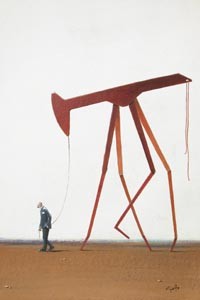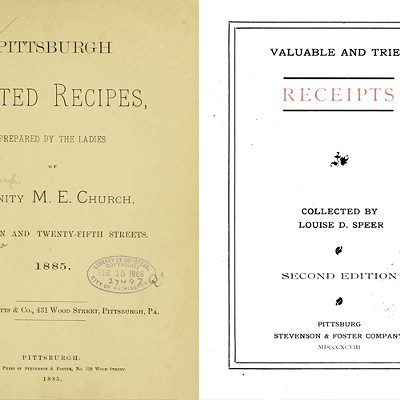Monday, September 21, 2009
Drawn to the Summit at the Warhol
You could do a lot worse to prepare for this week's G-20 than to check out this new month-long international exhibit of political cartoons.
How much these 59 images (lining that small gallery on floor 5) reflect "world opinion" is hard to say. Their character partly conveys the sensibilities of curators Sylvia Rhor and Post-Gazette cartoonist Rob Rogers (who pored over some 500 cartoons by 100 artists). And no doubt the idiosyncratic personalities of the world's cartoonists might channel the sentiments of their countrymen either more, or less.
Still, a few examples help demonstrate that not everyone sees global issues, or themselves, or us, as many American do.
Among the images you'd be least likely to see in an American publication, for instance, is Argentinian Sergio Langer's "Missles and Shoes": The upper panel depicts an array of bombs flying rightward, the lower panel a barrage of battered brogans hurled left, a la The Guy Who Threw His Shoes at Bush. Langer neatly summarizes the power imbalance, and perhaps makes us ask whether the right person went to jail.
Likewise, Australia's Peter Broelman puts a perspective-altering spin on the Somali-pirate matter, which the U.S. media played as a major threat to justice and peace. Broelman's image has two boats on the high seas. His bedraggled Somali pirates, in their skiff, say, "We're after ransom." "We call it a bailout," say the sleek, business-suited bankers in their fancy motorboat.
(If there is one thing the world's editorial cartoonists agree upon, it is their disdain for bankers.)
One can also learn about our neighbors to the south. According to the exhibit's wall text, in Mexico the figure of a skeleton in a cowboy hat – a calaveras -- is now as synonymous with that nation as Uncle Sam is with the U.S. (In one cartoon about the grim state of world finance, however, it's George Washington who shares a sinking canoe with the skeletal cowboy.)
One also finds environmental concerns where one might not have expected. Turkey's Eray Ozbek, for instance, depicts a golfer (seen only from the plus-foured knees down) preparing to tee off -- but instead of a ball there are the speckled eggs of two bewildered birds who perch in the background on one of three tree stumps standing between the flags on the green. Very The Lorax.
Meanwhile, China Daily's Pang Li addresses the vagaries of global climate-change negotiations. Diplomats assembled round a table in the Arctic tell a nonplussed polar bear, "We need to discuss your nationality." Rather tellingly – though China is now the world's top carbon emitter – none of the men's placards reads "China." In a unhappy sign for future climate talks, the cartoon's coffee-cup clutching U.S. representative looks especially venal.
American cartoonists fire at will at Obama these days, but few so artfully as the UK's Steve Bell's (UK), whose "Sermon on the Hood" takes the wind out of 44's soaring rhetoric: The commentary on the auto bailout finds a pious-looking Obama sitting on a big car in what appears to be a traffic jam, eyes skyward, intoning, "Blessed be the makers of cars, for they shall be the makers of cars ..."
My favorite piece, though, was the Italian cartoonist Alessandro Gatto's "Man's Best Friend." It depicts a human figure walking an oil-pump (the nodding-head kind, but with four legs) like a dog, against a stark landscape. It's empathetic and cutting at the same time, evoking our terrifying dependency on something that's killing us. Maybe that's called "tragedy." Gatto's wordless image is both poetic and beautiful enough to hang alone in an art gallery.
Tags: Program Notes , Image














